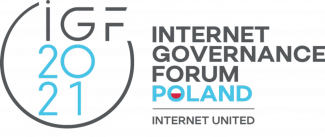Fan the flames? Regulating competition in digital markets
10 Dec 2021 10:15h - 11:45h
Event report
Due to the dynamic nature of digital markets, regulating competition in digital markets needs a more sophisticated approach. It is not easy to create the best model for the regulation of digital markets. Instead of quick regulation with hard law, governments may consider alternatives like constant monitoring and assessment of digital markets, including more multistakeholder consultations to devise soft law regulations and to act whenever it is necessary.Governments should not ignore the fact that local entrepreneurs are not often at the same level as larger technical companies, and may not be able to comply with regulations. Therefore, governments should not always rush to regulate. Speakers presented examples of small and medium sized enterprises that find it difficult to compete with larger companies in influencing emerging regulation.
However, regulation of mergers and acquisitions in digital markets need reform. The ability to call certain mergers anti-competitive is not sufficient to predict the long-term consequences of such mergers; future effects regulations should be taken into consideration as well. Presently, while developing regulations regulators typically focus on what is happening in the immediate present or the next few months. However, developments in the digital market take place much faster and much more unexpectedly than in traditional markets. While deciding to regulate, it is important for regulators to keep in mind the more distant future.
Despite the drawbacks of the multistakeholder approach, especially in regard to budget concerns, this approach works well in practice. The practice has been implemented in South America and India to produce better regulations for emerging digital markets. Ms Raashi Saxena discussed how the India Strategy, which was initially drafted by a government think tank, adopted a multisectoral consultation approach to fine tune the strategy of getting collective inputs from all sectors. Ms Paola Galvez (Strategic Advisor on Digital Regulation, Digital Government Secretariat of the Presidency of the Council of Ministers of Peru) spoke on how the Peruvian government has adopted a multistakeholder approach in the Laboratory of Digital Transformation and in the digital transformation in the country. Further, different approaches to the multistakeholder approach have been adopted in different regions.
The multistakeholder approach needs improvement to make it more inclusive with the participation of academia, shared Ms Veronica Piccolo. We also need to see more small and medium enterprises and researchers in decision making in order to have a full and effective multistakeholder approach, one in which we can better look at the future of smaller companies. However, the multistakeholder approach may sometimes result in compromising small and medium-sized companies, as the private sector is represented by larger, technical companies. Therefore, a focus on small- and medium-sized enterprises is needed, as many of them have innovative approaches and solutions. We also need to look at how regulations can be more future proof, to engage academia and small and medium enterprises better in in the stakeholder model, and to explore how the multistakeholder model can be further improved.
By Amrita Choudhury
Session in numbers and graphs




Automated summary
Diplo’s AI Lab experiments with automated summaries generated from the IGF sessions. They will complement our traditional reporting. Please let us know if you would like to learn more about this experiment at ai@diplomacy.edu. The automated summary of this session can be found at this link.Related topics
Related event

Internet Governance Forum (IGF) 2021
6 Dec 2021 10:00h - 10 Dec 2021 18:00h
Katowice, Poland and Online
